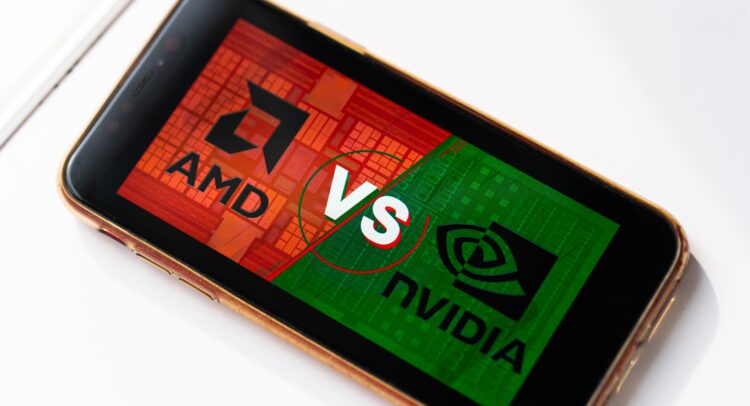Why Some Games Love AMD and Others Run Better on NVIDIA

If you’ve ever wondered why one game benchmarks better on AMD GPUs and another seems to favour NVIDIA, you’re not imagining things. Game engines, driver optimisations, and even API choices all influence how well a particular graphics card performs. In 2025, as both AMD’s RDNA 4 and NVIDIA’s RTX 50 series hit the market, the differences are more visible than ever.
The Foundation: Game Engines and API Choices
Every modern game runs on a game engine, and those engines are built with specific hardware and graphics APIs in mind. Titles that use Unreal Engine 5, for example, often leverage NVIDIA’s deep history with DirectX 12 Ultimate features such as DLSS, ray tracing, and mesh shaders. Meanwhile, games built on custom or open-source engines may align more closely with AMD’s optimisations for Vulkan and FSR.
Vulkan tends to perform exceptionally well on AMD hardware because it’s designed for low-overhead, parallel workloads that benefit from AMD’s wider shader architecture. Conversely, DirectX 12 games often show stronger performance on NVIDIA cards, thanks to NVIDIA’s mature driver stack and tight integration with its developer tools.
Drivers: The Hidden Performance Layer
Drivers play a massive role in how well your GPU performs in any given title. Both AMD and NVIDIA release “game-ready” driver updates before major launches, but the focus and depth of optimisation can differ.
NVIDIA has traditionally excelled at per-title driver tuning. The company works closely with developers during production, ensuring its GPUs make full use of proprietary technologies like DLSS, Reflex, and RTX IO. AMD takes a more open approach, offering broad optimisations that benefit a range of engines, particularly those using open standards like Vulkan and FSR.
The result? A game like Cyberpunk 2077, built with NVIDIA’s RTX features in mind, runs more efficiently on GeForce hardware, while a Vulkan-heavy title like DOOM Eternal often gives Radeon users the upper hand.
Architecture Differences: How Each GPU Thinks
AMD’s RDNA 4 architecture and NVIDIA’s Ada Lovelace (and soon Blackwell) architectures approach graphics workloads in very different ways.
- AMD GPUs excel at handling wide, parallel workloads. Their shader arrays are built for efficiency in complex pixel and compute operations, which helps in games with large open environments and heavy post-processing.
- NVIDIA GPUs focus on specialised hardware blocks, such as Tensor Cores and RT Cores, designed for ray tracing and AI-driven rendering. This means that games using DLSS or advanced lighting pipelines benefit heavily from NVIDIA’s approach.
Another consideration is how memory bandwidth and cache are managed. AMD’s Infinity Cache can deliver excellent results in bandwidth-limited titles, while NVIDIA often uses higher raw memory speeds to offset this. Depending on the game’s data streaming model, one can outperform the other.
Real-World Examples in 2025
To illustrate the point:
- Starfield and Horizon Forbidden West perform better on AMD hardware due to extensive optimisation under AMD’s partner program and Vulkan-based rendering paths.
- Alan Wake 2 and Cyberpunk 2077 both perform best on NVIDIA GPUs, thanks to DLSS 4 and advanced path tracing optimisations.
- Battlefield 6, on the other hand, has been praised for maintaining balanced performance across both vendors, with no specific bias thanks to DICE’s focus on engine neutrality and stability.
The Role of AI and Upscaling
AI upscaling is another factor that divides the two camps. DLSS 4 is still the most advanced form of frame generation and upscaling, providing exceptional clarity at lower render resolutions. FSR 4, however, has closed the gap considerably, especially since it’s now hardware accelerated on RDNA 4 GPUs.
The practical takeaway is that your experience can vary greatly depending on which technology a developer supports. If a game only supports DLSS, NVIDIA users will see sharper visuals and smoother frame pacing. When both FSR and DLSS are included, AMD owners can enjoy a much closer experience.
What About CPU Bottlenecks?
Another key factor is how each GPU interacts with your CPU. NVIDIA cards tend to have slightly higher driver overhead, which can reduce performance in CPU-bound titles. AMD’s approach, particularly on Ryzen systems, often shows better multi-core scaling in these scenarios. Games like Cities: Skylines II or X4 Foundations that are heavily CPU-dependent sometimes lean toward AMD for smoother frame pacing.
What This Means for You
If you play a wide range of games, the best choice often comes down to which technologies you value most. NVIDIA still leads in ray tracing and AI-based image reconstruction, while AMD offers better price-to-performance ratios and increasingly competitive frame generation.
For builders and gamers in 2025, the gap is narrower than ever. Choosing between AMD and NVIDIA is no longer about raw speed but about which ecosystem matches your favorite games and preferred settings.
Final Thoughts
The performance divide between AMD and NVIDIA has less to do with one being “better” and more to do with how each game is built. As engines evolve and open standards continue to spread, gamers can expect fewer one-sided results in the future. Until then, it pays to know which studios favor which tech and to choose a GPU that aligns with the games you actually play.
Tarl @ Gamertech

